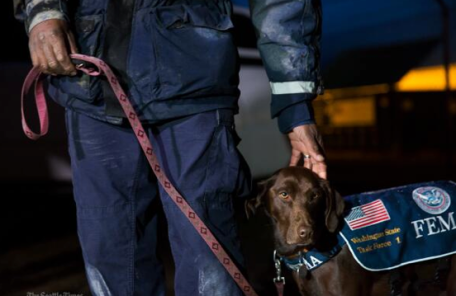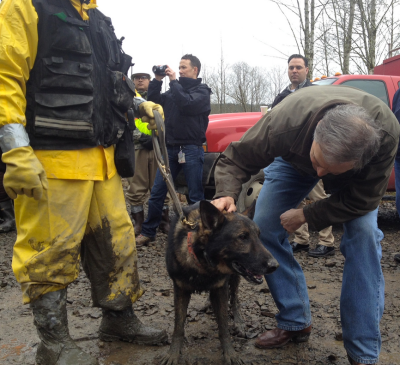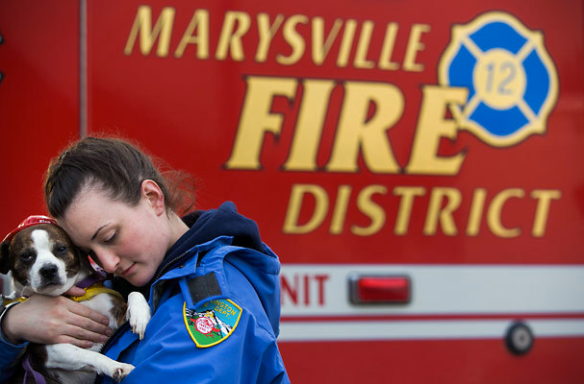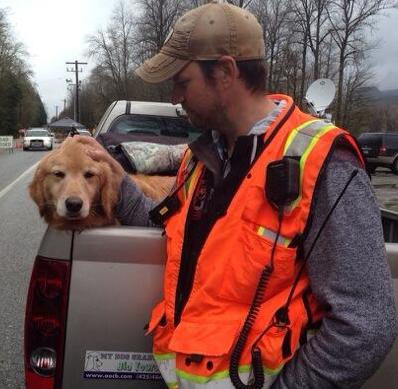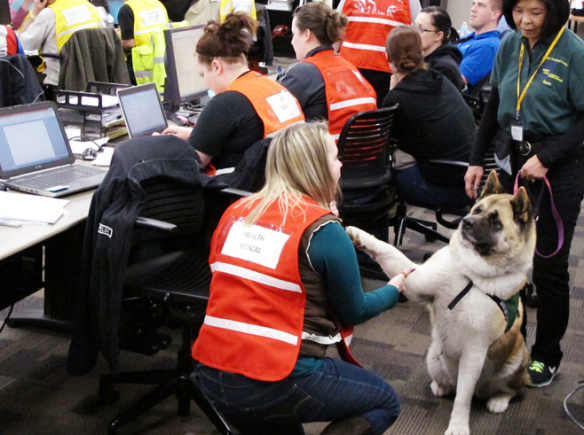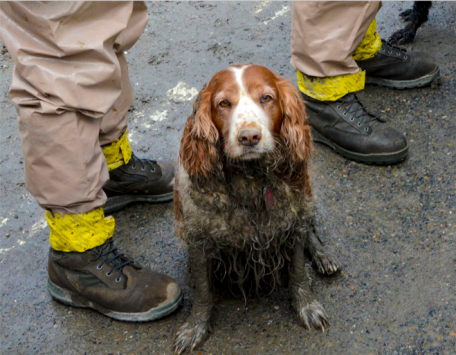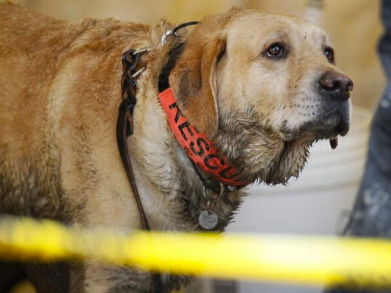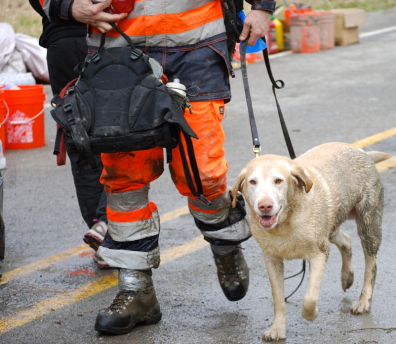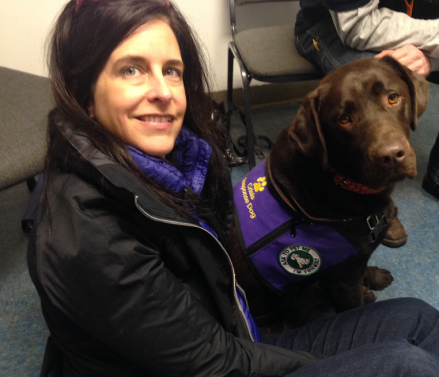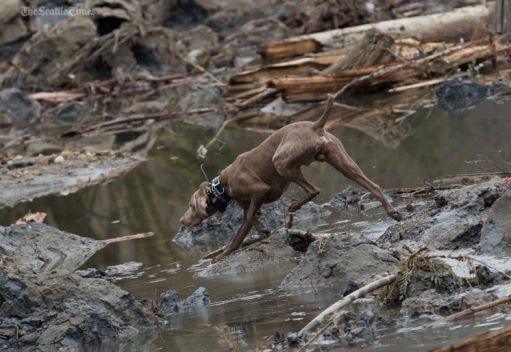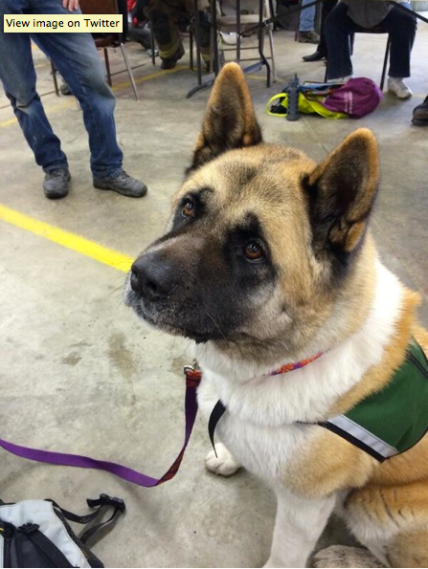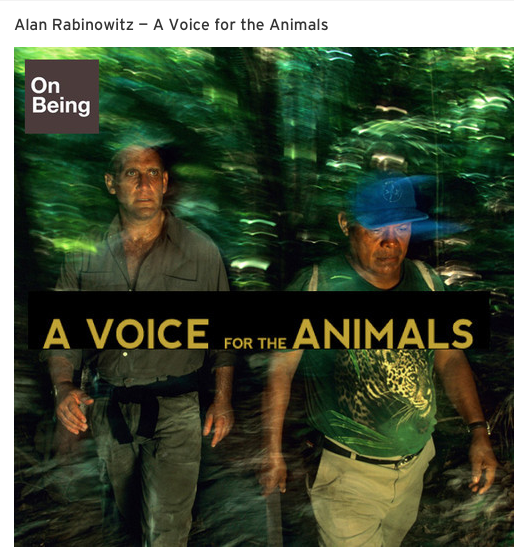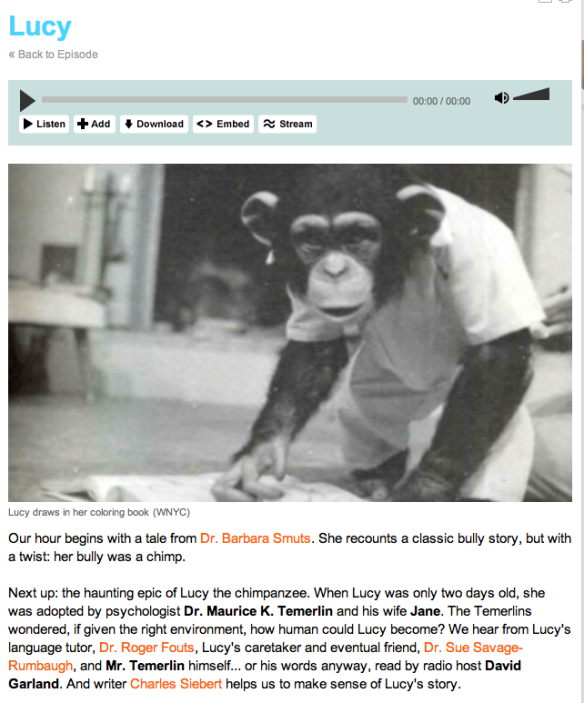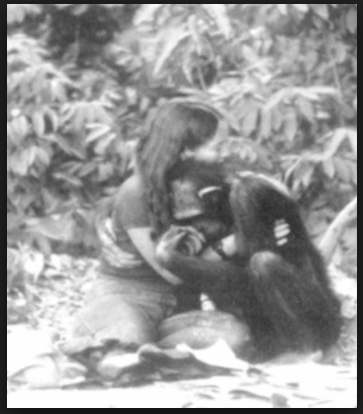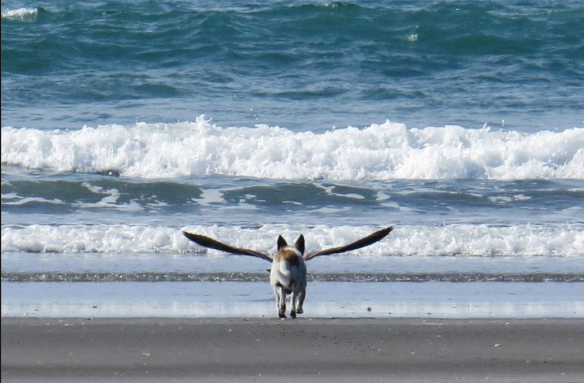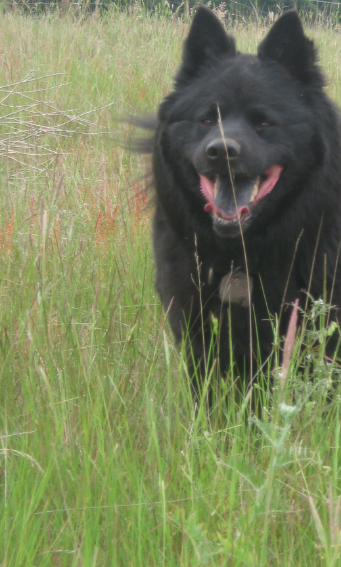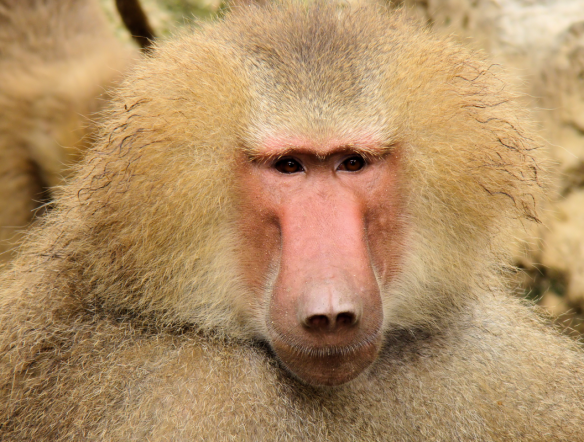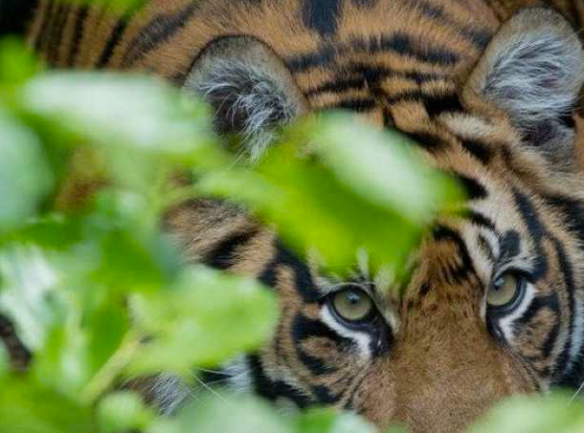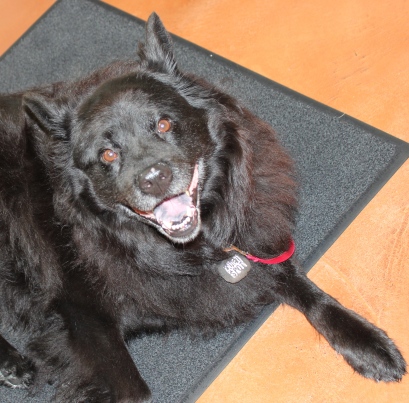In an earlier post I embedded a YouTube video of a mother sea otter escaping killer whales in Alaska by jumping on the stern of a small fishing boat. (Sadly, her calf was not as fortunate as she and was eaten by the whales.) Today a friend in Alaska sent me this story via email. It, too, features animals desperately swimming for an Alaskan fishing boat in search of safety.
My question from my earlier post remains: Do you think the animals sense the boat and the people on it are safe and will be helpful, or are they strictly “in a panic” and seeking any way out of the water?
Here follows the email I received. (I’ve added captions to the photos. Otherwise, I present it “as is”, complete with the original closing quote.)
A once in the history of mankind kind of thing: The Best Day Of Fishing Ever! Some fishing stories are a little hard to believe, but this guy has pictures to prove his story…
I’ve heard of salmon jumping into boats, but never anything quite like this… Tom Satre told the Sitka Gazette that he was out with a charter group on his 62-foot fishing vessel when four juvenile black-tailed deer swam directly toward his boat.
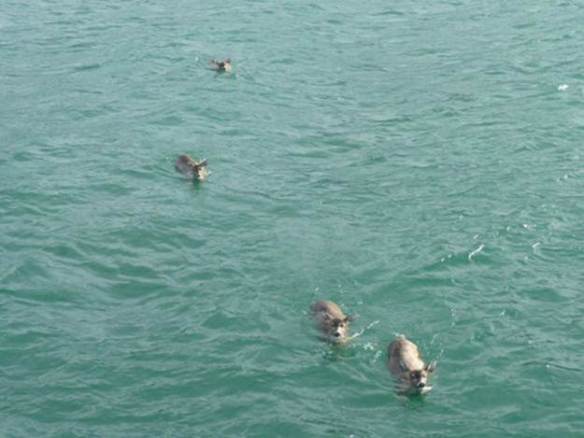
Away from what are the four deer swimming? Do they believe they can get on the 62 foot fishing boat?
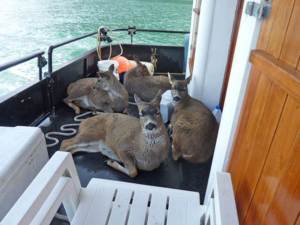
How fortunate that the captain was kind and understanding and helped the deer aboard.
“Once the deer reached the boat, the four began to circle the boat, looking directly at us. We could tell right away that the young bucks were distressed. I opened up my back gate and we helped the typically skittish and absolutely wild animals onto the boat. In all my years fishing, I’ve never seen anything quite like it! Once onboard, they collapsed with exhaustion, shivering.”
“This is a picture I took of the rescued bucks on the back of my boat, the Alaska Quest. We headed for Taku Harbor (near Juneau, Alaska). Once we reached the dock, the first buck that had been pulled from the water hopped onto the dock, looked back as if to say ‘thank you’ and disappeared into the forest. After a bit of prodding and assistance, two more followed, but the smallest deer needed a little more help.
This is me carrying the little guy. (See below)
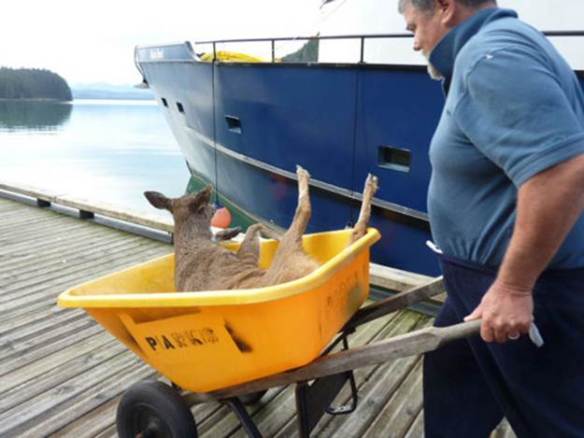
Too tired to walk and perhaps too cold, this deer gets a ride to safety in a wheel barrow.
My daughter, Anna, and son, Tim, helped the last buck to its feet. We didn’t know how long they had been in the icy waters or if there had been others who did not survive.

What a memorable day for all. As John Wooden said, “You can’t live a perfect day without doing something for someone who will never be able to repay you.
My daughter later told me that the experience was something that she would never forget, and I suspect the deer felt the same way as well!”
“Kindness is the language the blind can see and the deaf can hear.” – Mark Twain * * * * * * * * * * * * *
So, what do you think? Do you think the desperate deer had a “sixth sense” that these people were helpful and kind? Why or why not?

